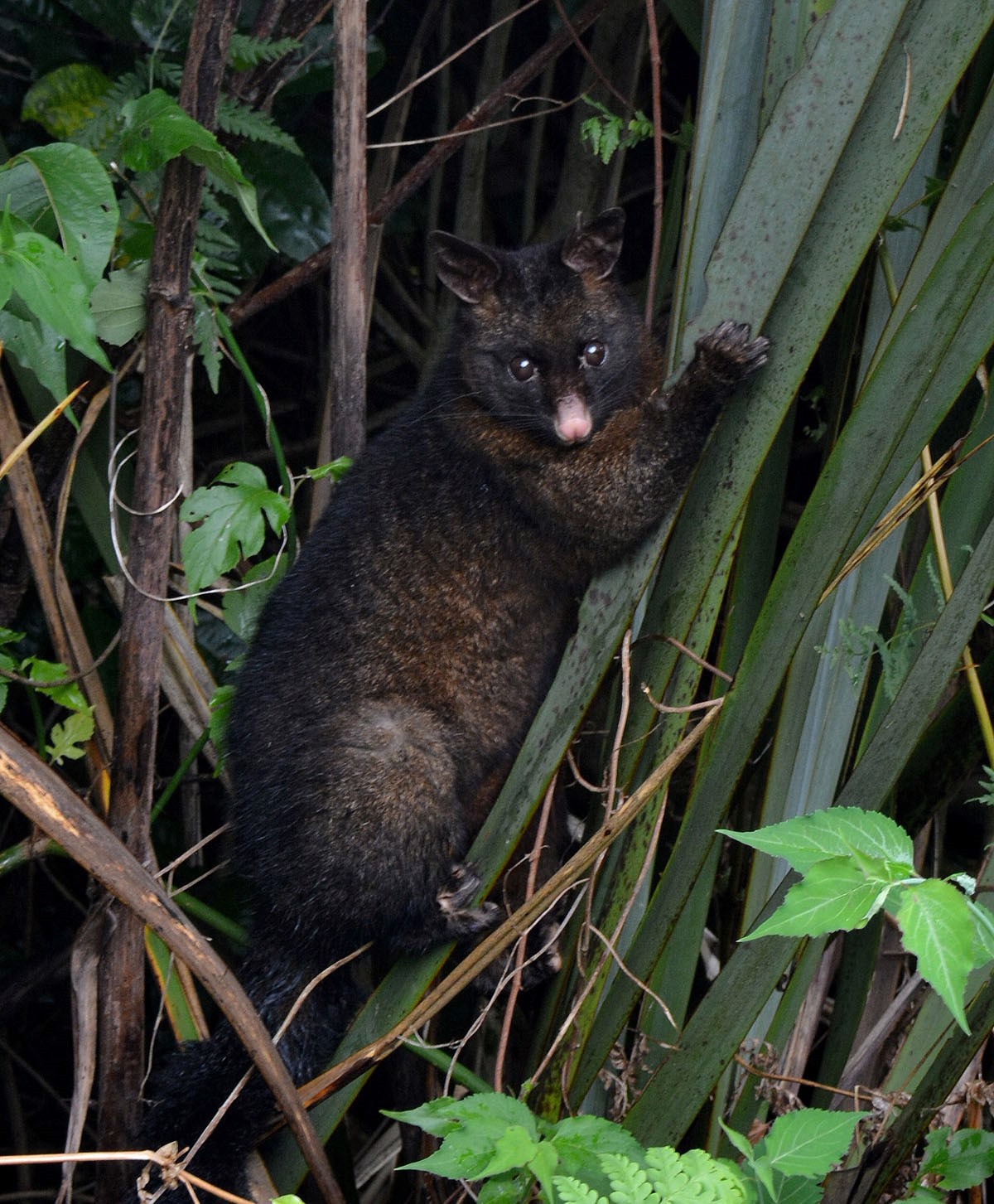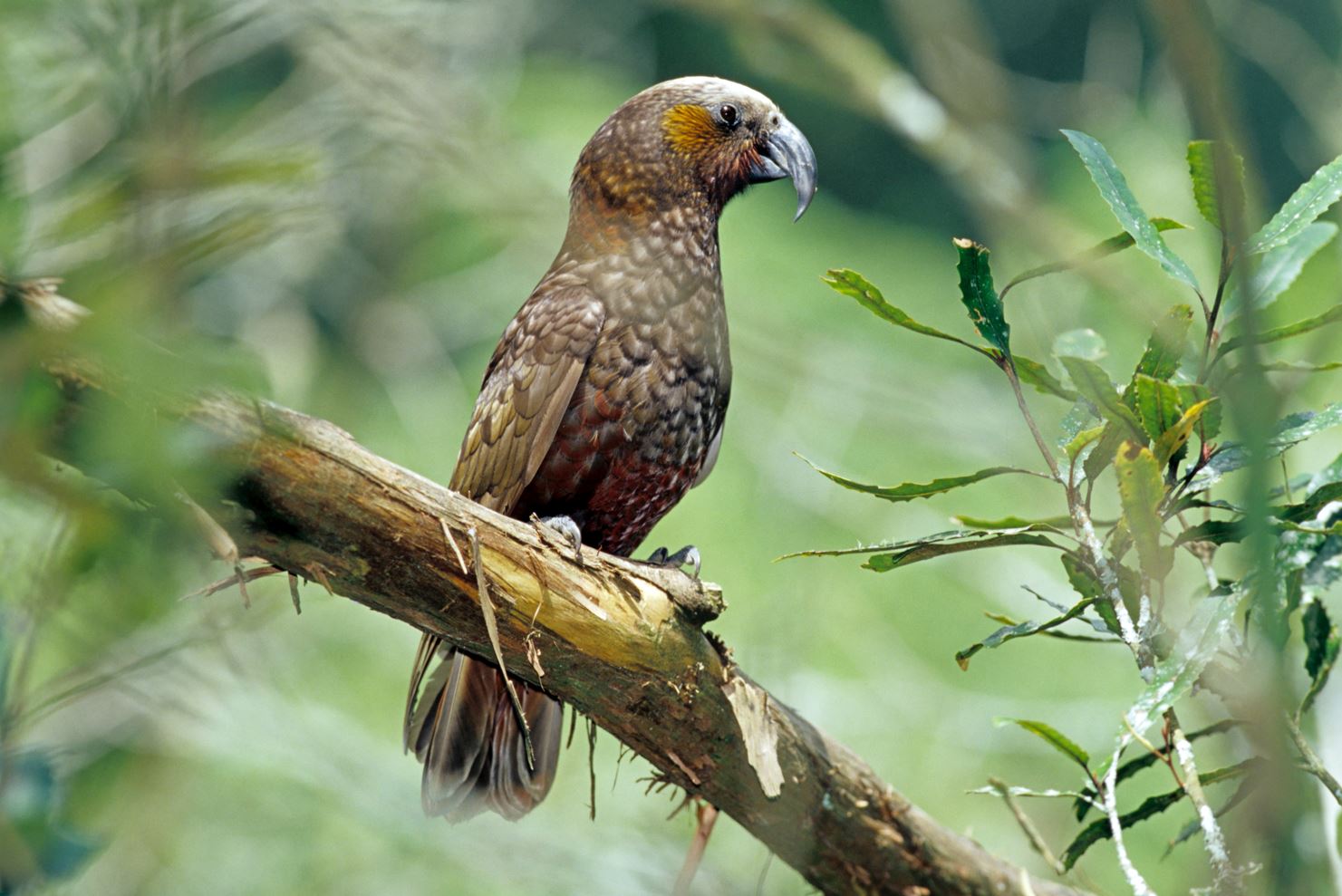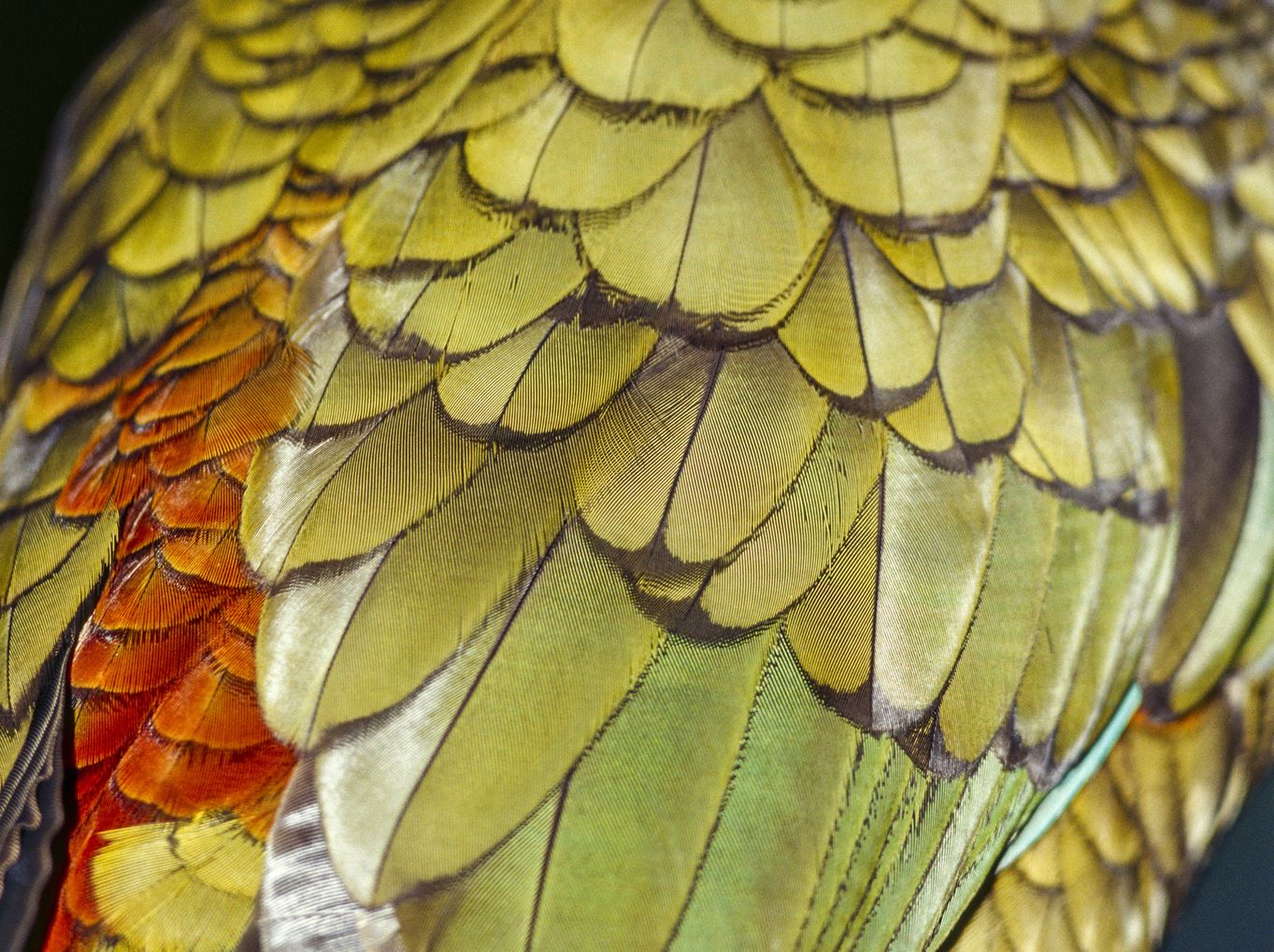Possums, rats and stoats
-
There are a number of introduced mammals that threaten our native ecosystems, but as far as our forests are concerned, there are three that consistently feature on the ‘most wanted list’ – possums, rats and stoats. All three eat eggs and young birds. Each is widespread and well established throughout the country and difficult to control.
Possums are found almost everywhere in New Zealand – there can be as many as 25 per hectare in preferred habitats, and a recent study estimated there are around 30 million in total. They are the major cause of the decline of trees such as pōhutukawa, rewarewa, kāmahi, māhoe, tawa and rātā and can change the composition and structure of native forests. They destroy the nests of kererū, and North Island kōkako. Possums have also been recorded killing adults or young of tītī (sooty shearwaters or muttonbirds), kāhu (harrier hawks), pīwakawaka (fantails) and tāiko (Westland black petrels).
Ship rats are the most prevalent of the three rat species in New Zealand and the greatest rodent threat to our native forests and the creatures that live in them. They live in all types of native and exotic forests from the coast to the treeline. The devastating impacts of these rats on native birds can be clearly seen on Big South Cape Island near Stewart Island, which was invaded by ship rats in 1962. Rat numbers exploded to high levels, and within three years, nine species of birds had declined or disappeared from the island, including South Island saddlebacks, Stead’s bush wren and the Stewart Island snipe.
Stoats can live anywhere they can find prey, from the coast to the treeline and beyond, and in farmland, scrub, native and exotic forests, and tussock grasslands. Populations of stoats undergo periods of explosive growth as a result of huge increases in mice and rat numbers following large-scale forest-tree seeding (known as ‘mast’ events). They can be described as the ‘perfect predator’– birds that nest on the ground or in holes on trees have no escape. Up to 60 percent of kiwi chicks are eaten by stoats. Researchers filming kiwi nests have observed stoats repeatedly visiting burrows while the eggs were being incubated, waiting for the chicks to hatch.










